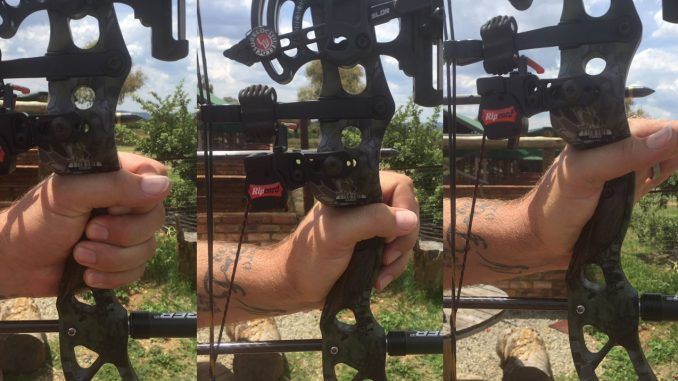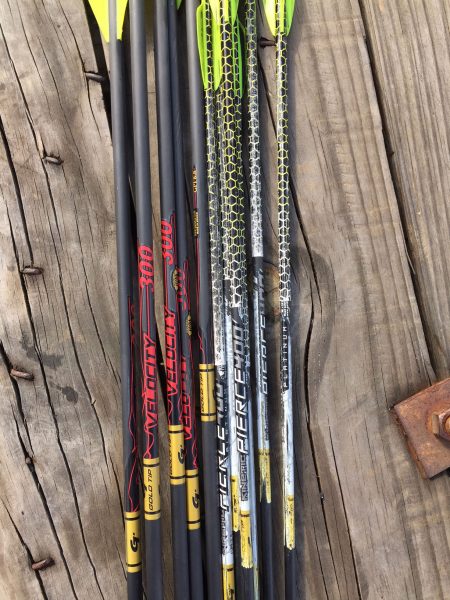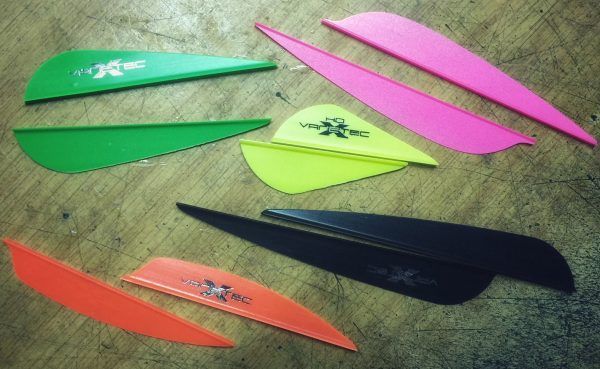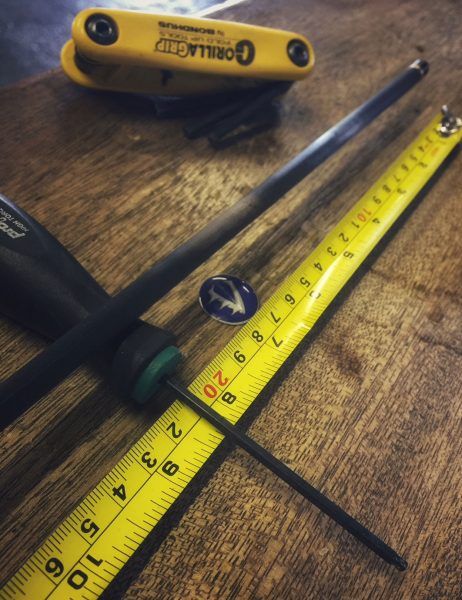
I have been thinking about the phrase “this is a very forgiving setup”? Ever consider what that means?
There seems to be this idea that brace height or FOC or limb shape will allow you to point the arrow in the general direction of your target and it will hit an X, which, if you think about it, cannot be true. So what do people mean when they the magical ‘forgiveness’ factor?
Seeing that nobody can really quantify it for me, I will attempt to describe what I understand (and then you can tell me that I’m wrong!)
Firstly, I think you have bow forgiveness and arrow forgiveness, and the two are connected and completely separate. Let me explain:
Even the worst bow will hit the same spot if you repeat the same actions. But you can make the process of drawing, holding, aiming and releasing consistently, easier. Think about it like this: if you have a 3 meter pole, extended straight out, try and hold the tip steady. It will be a challenge, but if you can counterbalance it, or hold it closer to the middle, all of a sudden the process gets a lot easier.
The same with your bow. Forgiveness, for instance, does not sit in brace height per se but rather in the ability of the design to create a balanced, rigid structure when on full draw. A lot of a bow’s forgiveness comes in during tuning. Every bow has a sweet spot for the bow, and a performance sweet spot according to your form and ability, and the average setup between those two points will decide how “forgiving” the bow will be.
But what does that mean? I believe the “forgiveness” of a bow refers to the ability of the bow to shoot an arrow with the least interference and unwanted force when the archer executes less than perfect...
For instance. If you do a torque tune, you will quickly see that the location of your sight and arrow rest has an impact on where your arrow hits when you torque your bow. You can influence the severity of the error.
The same for bow weight and balance. Weigh your bow down, and an anticipated shot or flinch will be much closer to the intended target than a light bow. The same with the timing of your bow. Take your timing out, and compare how steady you can aim vs when the timing is perfect. I will bet that you will be floating around quite a bit more.
Your bow will be at its most forgiving when you have it set up well and tuned well.
(Unashamed plug: go visit your proshop and see what they can actually do for you!)
So from that you can infer that an aggressive bow will likely not be a “forgiving” bow because its more difficult to manage the structure on full draw. It doesn’t mean it will give a random result, it just means the archer needs more skill to take advantage of the strong points of the bow, and manage the weak points of the bow.
A forgiving bow simply allows you to get an above average result even when my form and execution and tuning is not at its best. Above Average, however, does not mean perfect. It just means its not as bad as it could have been.
 Which now brings us to the arrow…
Which now brings us to the arrow…
Just like a bow, an arrow is a flexible structure, constantly changing shape during shot execution. And just like a bow, you can shoot an arrow that doesn’t match your setup (is “out of tune”) but expect that when things go wrong, it goes really wrong.
So what can we “tune” on an arrow? What influence the effectiveness of an arrow in flight and total accuracy?
- Drag – the control surface that is the fletches (and to a lesser extent, the broadhead)
- Spine – the amount of flex in the shaft
- Response – the ability of the shaft to return to a straight line
- Point weight
- FOC
Unlike a bow, the peak of an arrow changes according to your use case, and changing any of these will make almost no perceptible difference if you only shoot 20-30yds. For instance, using really big fletches or a 4-fletch system, increases the drag and steering of the arrow. So if you have a broadhead which steers the front of the arrow, big fletches are great to get that under control,
 However, big fletches or a system that creates more steering and therefore more drag, means you lose more energy over distance. Less speed overall, and less ability to sustain the speed.
However, big fletches or a system that creates more steering and therefore more drag, means you lose more energy over distance. Less speed overall, and less ability to sustain the speed.
The spine has a similar effect. When the bow releases its energy onto the arrow, its pushing a stationary object. If we ignore the weight differences for a moment, a hard spine that is in any way pushed sideways from the back (not in perfect alignment) will kick the tail out, and not transfer all the energy from the bow to the arrow. The arrow is like a rubber ball or golf ball, it gets compressed, and then releases the energy, as it straightens out. Too soft on the spine means the front and the back nodes moves out of line, the arrow gets too compressed, and responds out of balance, kicking the nose away from the target line. This gets worse if the arrow doesn’t have a good response after getting bent. If the arrow does not return straight before flexing, it means the front nodal point just shifts off the target line by a fraction, and then off again by another fraction as it bends the other way.
The spine is also influenced by the point weight. Remember, the arrow is standing still, and then gets compressed from the back. The heavier the point, the more the arrow shaft bends before the point starts moving. So why go for a heavier point?
 A heavier arrow penetrates better through environmental influences. It means it carries its momentum better – think of soccer ball vs a medicine ball. The one you can stop in front of your face by just catching it, the other, you will probably want to get out of the way. So in arrow terms, a heavier arrow will not be influenced by wind or rain so much. However, should you be able to transfer that weight to the front of the arrow, you win more.
A heavier arrow penetrates better through environmental influences. It means it carries its momentum better – think of soccer ball vs a medicine ball. The one you can stop in front of your face by just catching it, the other, you will probably want to get out of the way. So in arrow terms, a heavier arrow will not be influenced by wind or rain so much. However, should you be able to transfer that weight to the front of the arrow, you win more.
It means the lighter tail can “weathercock” with the wind, without pulling the whole arrow to the side. Keeping the direction of the arrow flight accurate. Think of planes landing in severe crosswind, they push the nose into the crosswind, but still fly sideways to the landing strip. Hitting the vitals perfectly with an arrow head that is slightly angled means less penetration, but is much more preferred than a perfect, straight on miss.
And no matter where you find yourself on the question of standard FOC vs Extreme FOC, the truth is that there is forgiveness in a Front of Centre setup. Even a 5% FOC is still nose heavy. And its easy to think that if you just add more, you can get more, but at some point you give up a benefit, making the whole setup, less effective and less forgiving.
